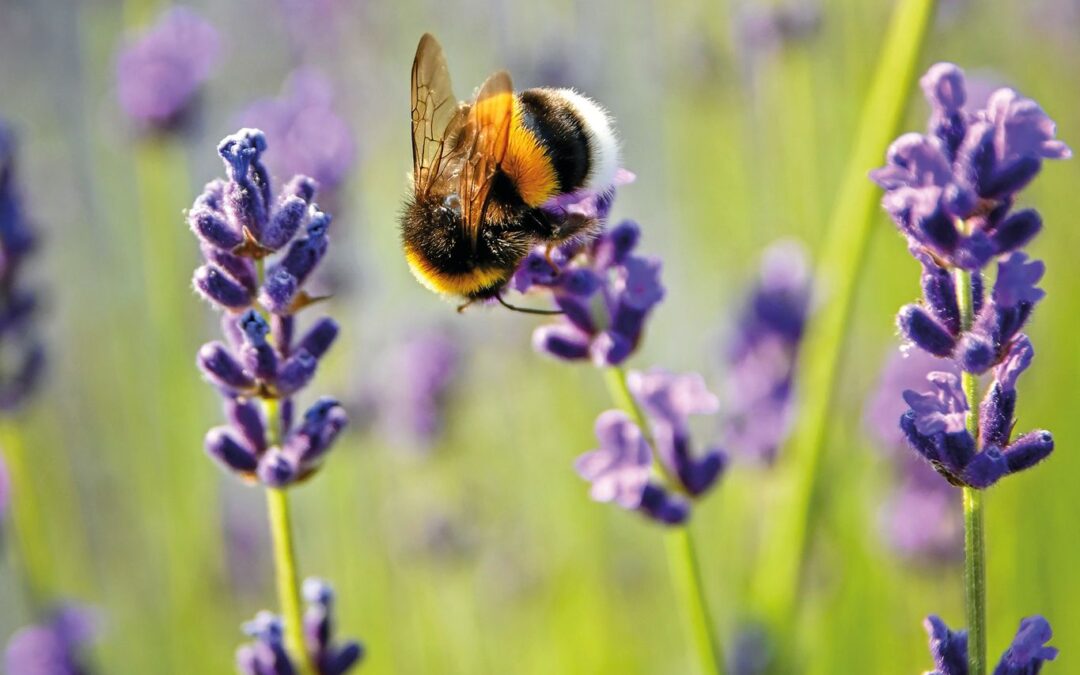There’s something lovely about a garden alive with bees industriously going about their work. They are also vital for pollinating our food, such as nuts, vegetables and fruit. But since they’re sadly in decline due to a loss of habitats and the use of pesticides, the more we can encourage them into our gardens, the better.
When it comes to the pollinator-friendly plants to provide the nectar (carbohydrates) and pollen (protein) bees need, look for single open flowers where the centre is easily accessible, rather than those with lots of petals. For the summer months opt for daisies, rudbeckia, asters, single dahlias and sunflowers, along with other summer perennials such as verbena, scabious, knautia, holllyhocks and sedum.
Also bear in mind that different bees are attracted to different flowers. For example, bumble bees and slimmer honey bees love the tiny flowers on herbs such as oregano, rosemary, lavender, thyme, nepeta and clover – my clover rich lawn is abuzz! Wool carder bumble bees like plants such as stachys (lamb’s ears) as they collect hairs from the leaves and stems of plants to build their nests while long-tongued bumble bees like tubular-shaped flowers such as penstemons and foxgloves.
Ensuring you have blooms for every season will also help attract a range of different bees. The busiest time for bees is the summer, but they tend to emerge from hibernation in March so try to include spring blossom and bulbs such as crocuses and primroses for spring nectar and native wildflower meadows are also appealing for bees. A few winter- flowering plants such as hellebores and winter honeysuckle or clematis are also helpful as some bees emerge from hibernation early in mild winters. For smaller gardens, long flowering plants such as Erysimum ‘Bowles Mauve’ will keep the nectar coming.
Tempting as it is, try to avoid pesticide which is toxic to pollinators. It’s better to use a natural aphid spray and encourage ladybirds to keep pests down. Also provide food and water for thirsty, hungry bees by making a bee bath with a shallow bowl of water, and if you might find them on the path or lawn looking exhausted, a lid with a spoonful of sugar dissolved in two spoons of water will help revive them.
Finally, create habitats in your garden. Leave a pile of wood, branches and twigs for solitary bees that make individual nest cells for their larvae. Some species such as red mason and leafcutter bees, which pollinate fruit crops, nest in tubes or tunnels. For honey bees, companies such as Bee Kind Hives encourage sustainable bee keeping with hives that need little intervention from beekeepers.

